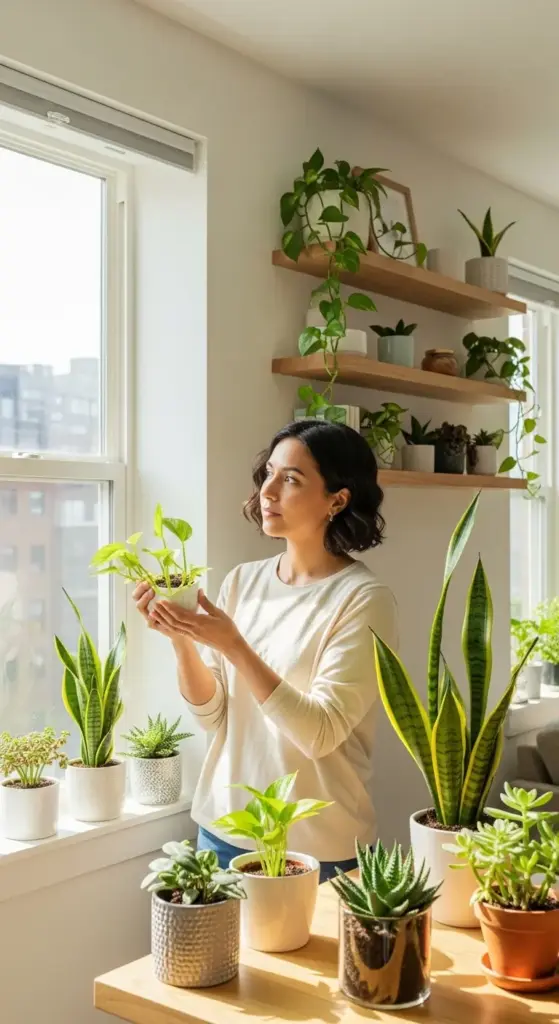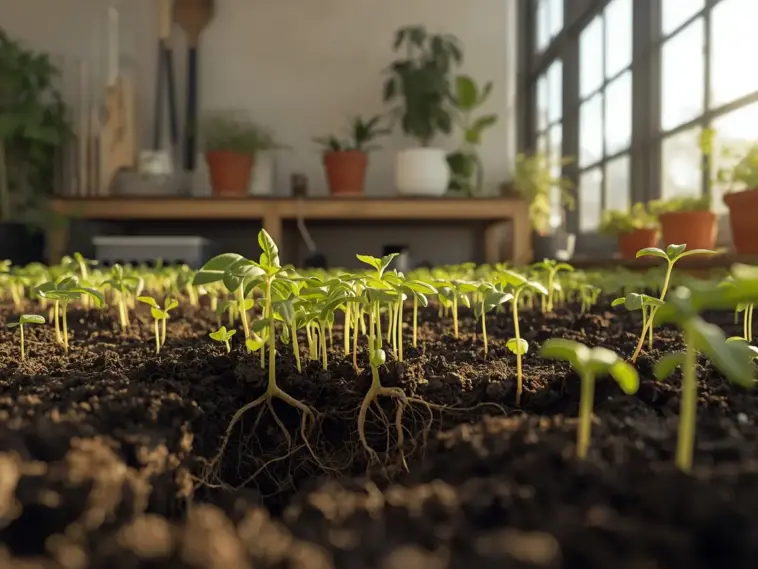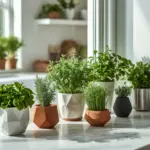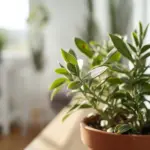Did you know that 76% of millennials kill their houseplants within the first year?
Ouch! If you’re tired of turning your beautiful apartment into a plant graveyard, you’re not alone.
As someone who’s transformed countless brown thumbs into green ones, I can tell you that growing small plants isn’t rocket science – but there ARE critical steps that make all the difference.
Whether you’re decorating your Chicago loft with trendy succulents or creating an Instagram-worthy plant corner in your Seattle home, these seven steps will save you from heartbreak (and money!).
Skip even one of these, and you might find yourself explaining to yet another wilted fiddle leaf fig why it couldn’t just cooperate.
Let’s dive into the foolproof system that’ll have your friends asking for your plant parent secrets!
1. Choose the Right Plant for Your Space and Lifestyle

Let me tell you about my biggest plant mistake ever. I bought this gorgeous fiddle leaf fig because it looked amazing on Instagram, without considering that my apartment gets about as much light as a cave.
Three weeks later? Dead as a doornail.
That expensive lesson taught me something crucial: choosing the right plant isn’t about what looks pretty – it’s about what actually works in your space.
Assess Your Home’s Lighting Like a Detective
Here’s what I wish someone had told me from the start. North-facing windows get gentle, indirect light all day – perfect for low-light plants like pothos or snake plants.
South-facing windows are like plant heaven. They get intense, direct sunlight that makes sun-loving plants like succulents absolutely thrive.
I learned this the hard way when I put a delicate prayer plant in my south window. Poor thing got sunburned faster than I do at the beach!
East and west windows fall somewhere in between, giving you moderate light that works for most houseplants.
Match Plants to Your Actual Schedule (Not Your Ideal One)
Be honest with yourself here. Are you the type who checks on plants daily, or do you forget they exist for weeks?
I used to think I was a dedicated plant parent until I killed my third high-maintenance orchid. Turns out, I’m more of a “water when I remember” kind of person.
Low-maintenance champions like ZZ plants, snake plants, and rubber trees can handle neglect like champs. They’re basically the golden retrievers of the plant world – happy just to be there.
High-attention plants like calatheas and ferns need consistent moisture, humidity, and care. Save these for when you’ve mastered the basics.
Consider Your Living Situation Honestly
Got cats or dogs? Skip the toxic plants like pothos, philodendrons, and peace lilies. Trust me, vet bills are way more expensive than plants.
Pet-safe options include spider plants, Boston ferns, and most succulents. My cat actually loves nibbling on spider plant babies – it’s like kitty salad!
Living in a rental? Stick to container gardening and avoid anything that might damage walls or floors.
Factor in Your City’s Climate
This one’s huge and often overlooked. Humidity levels vary dramatically between cities.
If you’re in Seattle or Portland, you’ve got natural humidity that tropical plants love. But if you’re in Denver or Phoenix? You’ll need to work harder to keep moisture-loving plants happy.
I learned this when I moved from humid Atlanta to dry Colorado. My tropical plants went from thriving to crispy in about two weeks.
Desert dwellers should embrace cacti and succulents – they’re literally made for your climate.
Budget-Friendly Starter Plants That Won’t Break the Bank
Start small and cheap while you’re learning. Pothos cuttings cost like $3 and grow like weeds.
Snake plants are practically indestructible and you can find small ones for under $10. Spider plants produce babies constantly, so buy one and you’ll have a dozen within a year.
Avoid expensive statement plants until you’ve kept cheaper ones alive for at least six months. Your wallet will thank you.
Space-Saving Solutions for Small Apartments
Vertical growing is your best friend in tight spaces. Wall-mounted planters and hanging baskets maximize your plant collection without eating up floor space.
Trailing plants like pothos and string of hearts look amazing cascading from shelves or plant stands.
Corner plant stands can turn dead space into a mini jungle. I fit seven plants in a 2×2 foot corner using a tiered stand.
Ready to set up your plants for success? The next critical step is creating the perfect potting setup – and trust me, getting this wrong can kill even the most forgiving plant. Click “next” below to learn the potting mistakes that cost me dozens of plants (and how to avoid them)!










GIPHY App Key not set. Please check settings